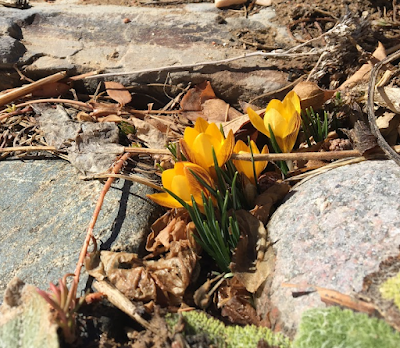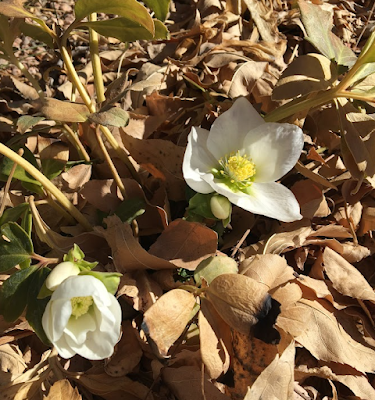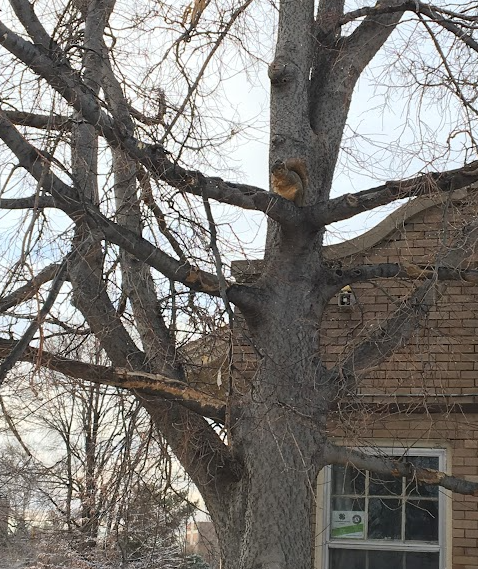posted by: John Murgel, Horticulture and Natural Resources Specialist, Douglas County
Ever wonder why Groundhog Day is even a thing? It is one of a broad selection of holidays across cultures and times that mark the mid-point between the winter solstice and the spring equinox.
These holidays are known as “cross-quarter days,” and you
can read more about them here: https://www.astronomy.ohio-state.edu/thompson.1847/161/time
 |
| These crocus reliably bloom in February. |
 |
| Hellebores ringing in spring on January 29. |
What are some other spring signs to look for?
1. Bleeding Trees—as deciduous trees begin to move resources from storage in the roots to the limbs, the surging sap will find any leaks in the pipes. Frost cracks, old pruning cuts, and wounds deliberately inflicted by wildlife (I’m looking at you, squirrels), all provide escape channels for oozing or flowing sugary water. Maples are famously leaky trees; this is why many people prefer to prune them in the summer. As temperatures warm and the trees finish growing leaves, the sap flow will slow down and the leaking should cease; hopefully to be stopped before next spring by the trees’ natural wound response.
 |
| It's hard to say if this squirrel or the damage it caused is more noticeable. |
2.
Cool season weeds—cheatgrass, henbit, cheeseweed,
and prickly lettuce are examples of the many plants that get a jump on the
season by germinating in the fall or winter.
Growing quickly when temperatures allow, they get the competitive edge
on their neighbors and if you’re not careful, take over the garden. Many are annuals, manage them while they’re
small and before they set seed!
 |
| Cranesbill, Erodium cicutarium, is a common "winter" weed. |
3.
Geophytes – plants that hide during the summer
heat like tulips, daffodils, and hyacinths are starting to grow underground
where most of us won’t see them. Other
plants, though, like snow buttercup (Eranthis hyemalis) and snowdrops (Galanthus
nivalis and other species), as their names imply, can already be seen
gracing landscapes with their flowers.
 |
| This snowdrop is a welcome site for a cold gardener and a questing honeybee alike! |
These spring signs, I grant you, are not the ebullient
floral displays of May, but they are a sure sign that winter is over, and that
should be welcome news for any gardener!

No comments:
Post a Comment